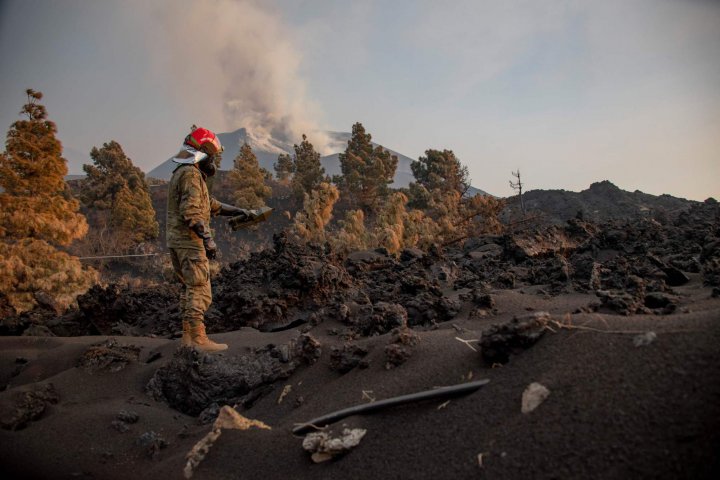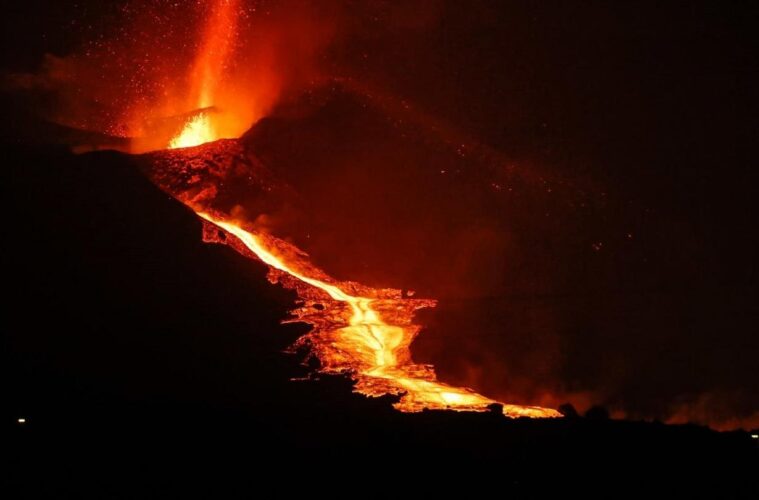A Canary Island TV drone recorded the lava flow rushing down the slope of Cumbre Vieja this evening at 8:30 pm local time.
The eruption of the La Palma Volcano began just over six weeks ago on September 19th. The Cumbre Vieja volcano on La Palma has now covered over 3,000 hectares with over 10 million cubic meters of ash since it began erupting.
Crews and residents do what they can to remove the grit from buildings, roads and any other surface blackened by the material.
One local company that has four decades of experience treating construction materials is collecting the ash in hopes of using it to fertilize crops in the area. The volcanic ash is rich in calcium, magnesium, iron and potassium. These minerals could benefit the banana, avocado and grape crops on the island.

(Photo by Luismi Ortiz / UME / AFP)
The European Union Copernicus Emergency Management Service released its latest map of the lava flow on La Palma from 1 November. Over 2,600 buildings have now been destroyed. Molten rock from the eruption now covers 987.9 hectares with the most recent flows spreading out from the southern edge.
This week the Spanish Navy will determine whether it is feasible using military boats to land farmers and workers near Puerto Naos in areas cut off by the lava field so that they can check on their plots and irrigation systems.
Spanish authorities have reported that more than 2,500 structures have been destroyed during the eruption. With no end in sight, new areas are threatened as new lava flows and mouths emerge.
Published by HOLR Magazine


